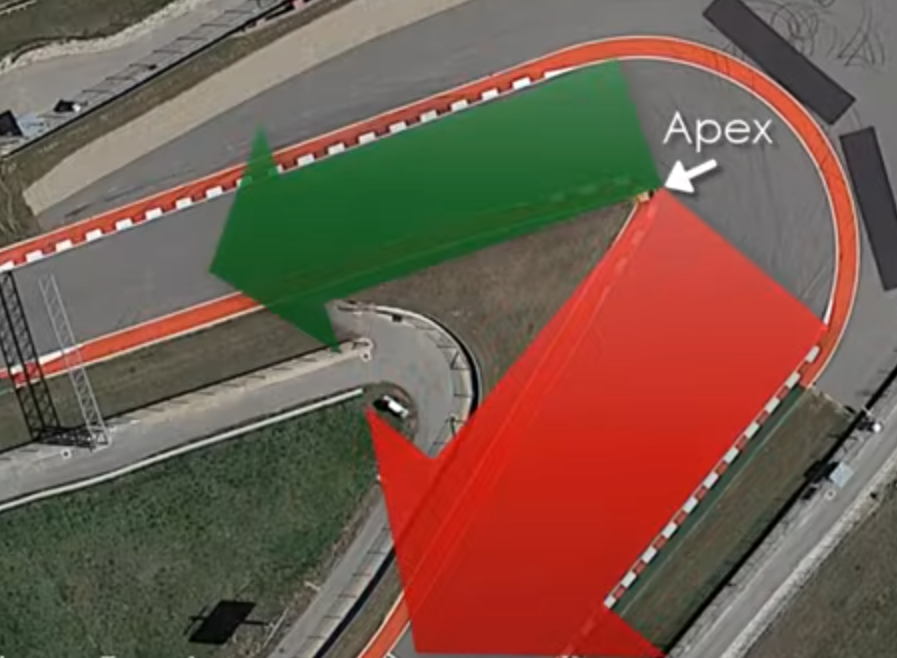
Mastering the Art of Cornering in the Future of Racing
The battle between late apex vs. early apex has long been a defining debate in motorsports, shaping how drivers extract speed from every corner. While these two cornering strategies have been analyzed and taught for decades, the evolution of racing technology, artificial intelligence, and virtual simulation is pushing drivers to rethink how they approach apex selection.
This article will expand beyond traditional discussions and explore apex strategies from an expert-level perspective, incorporating data-driven insights, professional case studies, AI-driven racing analysis, and the impact of emerging vehicle technologies.
Understanding Apex Strategies in Cornering
Apex selection in racing is about optimizing the trade-off between corner entry, mid-corner speed, and exit acceleration to minimize lap times. Before delving into advanced racing techniques, let’s break down the essential phases of a corner:
- Entry: The braking phase before turn-in, where drivers manage speed and weight transfer.
- Apex: The point at which the car is closest to the inside of the corner, defining the trajectory through the turn.
- Exit: The acceleration phase out of the corner, where momentum is regained for the next section of the track.
Two primary strategies exist for hitting the apex, each with distinct advantages and disadvantages:
Apex Strategy Comparison Table
| Strategy | Best For | Key Benefit | Risk |
|---|---|---|---|
| Early Apex | Tight corners, defensive driving | Faster mid-corner speed | Risk of running out of track on exit |
| Late Apex | High-speed corners, maximizing exit speed | More stable, better acceleration | Can compromise mid-corner speed |
| Hybrid Apex | Dynamic cornering (AI-optimized) | Adjusts per lap for ideal speed balance | Requires high adaptability |
Professional Case Studies: Apex Strategy in Elite Racing
Formula 1: Data-Driven Apex Selection
Modern F1 cars use high-downforce aerodynamics, meaning the optimal apex often shifts based on tire degradation, fuel load, and track evolution. Telemetry analysis from Red Bull Racing and Mercedes-AMG Petronas F1 teams shows how drivers like Max Verstappen and Lewis Hamilton adjust their apex approach dynamically:
- Late Apex in Heavy Fuel Load Conditions – Early in a race, when cars are heavier, drivers delay their turn-in to maintain stability on exit.
- Early Apex in Qualifying Laps – In low-fuel conditions, an early apex can sometimes carry higher mid-corner speeds, useful in technical circuits like Monaco or Singapore where acceleration zones are short.
- Hybrid Apex in Overtaking – During overtakes, F1 drivers modify apex points depending on race strategy. They use early apex entries to block opponents and late apexes to execute switchback moves for better acceleration.
Pro Insights: F1 Racing Strategy
Max Verstappen: “Late apexing is crucial for maximizing acceleration in high-speed circuits like Silverstone.”
Mercedes-AMG F1 Engineer: “Telemetry data suggests hybrid apexing can save up to 0.3s per lap when adapting to tire degradation.”
Endurance Racing: Balancing Speed and Tire Management
Unlike F1, endurance racing (e.g., Le Mans, WEC, IMSA) requires balancing apex selection for tire longevity and fuel efficiency. Analysis from the Toyota Gazoo Racing Hypercar team shows that a later apex strategy is often used to reduce lateral tire wear over multi-hour stints.
Example: 24 Hours of Le Mans – Tertre Rouge
- A later apex allows for maximum speed onto the long Mulsanne Straight, reducing fuel consumption and improving long-term stint performance.
Sim Racing & AI: The New Apex Revolution
With the rise of AI-powered racing simulations and esports, apex strategy is evolving at an unprecedented pace. In platforms like iRacing, Gran Turismo, and Assetto Corsa, AI-driven racing models provide insight into hyper-optimized racing lines that humans rarely consider.
Example: GT Sophy (Sony AI Racing Agent)
- This AI defeated professional Gran Turismo players by adapting its apex dynamically in response to opponent positioning, traction levels, and predictive braking zones.
Sim Racing Drill: Test Your Apex Strategy in a Simulator
Challenge:
- Load iRacing, Assetto Corsa, or Gran Turismo.
- Choose a track with technical corners (e.g., Suzuka or Spa).
- Lap 1-5: Use Early Apex strategy and record lap times.
- Lap 6-10: Use Late Apex strategy and compare times.
- Analyze exit speed, braking stability, and tire wear impact.
Future of Apex Strategies: AI, Active Aero, and Vehicle Evolution
1. AI-Enhanced Racing Lines
Advanced machine-learning algorithms can now analyze millions of racing lines in real-time. Future autonomous racing vehicles (like Roborace AI-powered race cars) will likely optimize apex strategies beyond human capability, refining micro-adjustments based on real-time tire temperature, grip levels, and opponent positioning.
Track-Specific Apex Recommendations
| Track Corner | Optimal Apex Strategy | Why? |
|---|---|---|
| Monaco (Fairmont Hairpin) | Early Apex | Needed for tight corner rotation |
| Silverstone (Copse Corner) | Late Apex | High-speed exit crucial |
| Le Mans (Tertre Rouge) | Hybrid Apex | Balances tire wear & exit speed |
| Suzuka (130R) | Late Apex | Ensures max speed on exit |
Advanced Apex Strategies: Blending Late and Early Apex Techniques
1. The “Double Apex” Method
- Used in long, sweeping corners (e.g., Turn 1 at Circuit of the Americas).
- Involves two distinct apex points: one early, one late.
- Helps maintain higher mid-corner speeds without compromising exit acceleration.
2. The “V-Cut” Apex Approach
- Used in tight hairpins and low-speed corners (e.g., Monaco’s Fairmont Hairpin).
- Aims for maximum straight-line braking, a sharp rotation, then early throttle application.
- Common in Formula E and Karting, where acceleration grip is crucial.
3. The “Hybrid Apex” (AI-Optimized Line)
- The most advanced approach, blending late and early apex strategies dynamically.
- Common in GT racing and endurance circuits where conditions change throughout a race.
- iRacing telemetry data shows a hybrid apex saves 0.2-0.5s per lap on average.
Conclusion: The Future of Apex Selection in Racing
✅ Late Apex Advantages: Maximized exit speed, better traction, safer for novices.
✅ Early Apex Advantages: Faster mid-corner speed, good for overtakes, beneficial in some track conditions.
✅ Future Trends: AI, active aerodynamics, EV torque delivery, and predictive racing models will redefine apex strategies beyond what human drivers traditionally use.
Final Thought:
As technology evolves, so must driving techniques. The apex strategies of today may be obsolete in the next generation of racing—those who adapt AI-driven insights, telemetry analysis, and emerging vehicle tech will lead the future of motorsport.
Next Steps: Want to Train Like a Pro?
- Use AI Simulations (iRacing, Assetto Corsa, GT Sophy) to analyze apex strategies.
- Study Professional Telemetry from F1, WEC, and endurance racing.
- Experiment with Hybrid Apexing to dynamically adjust based on grip levels, car balance, and race conditions.
